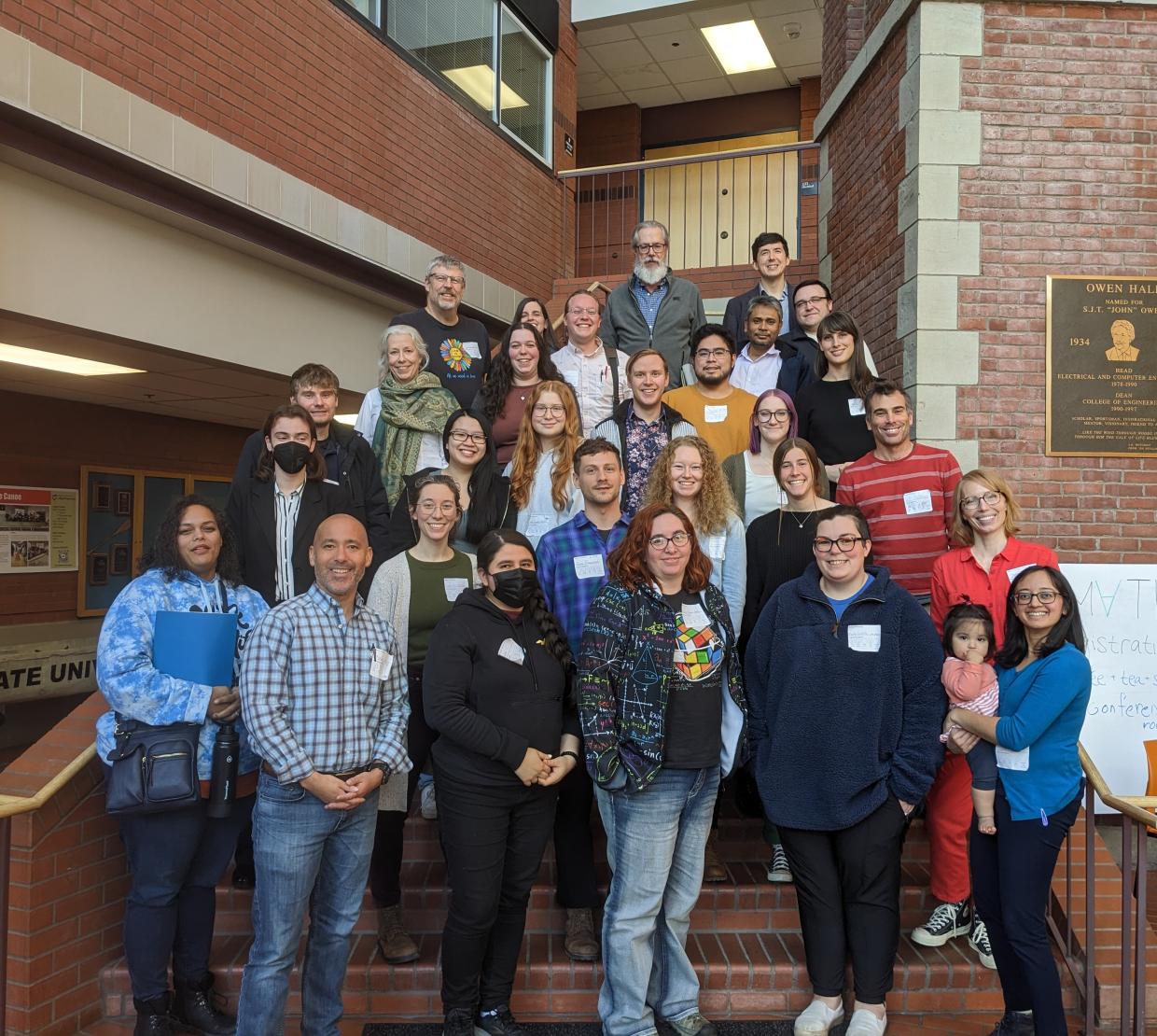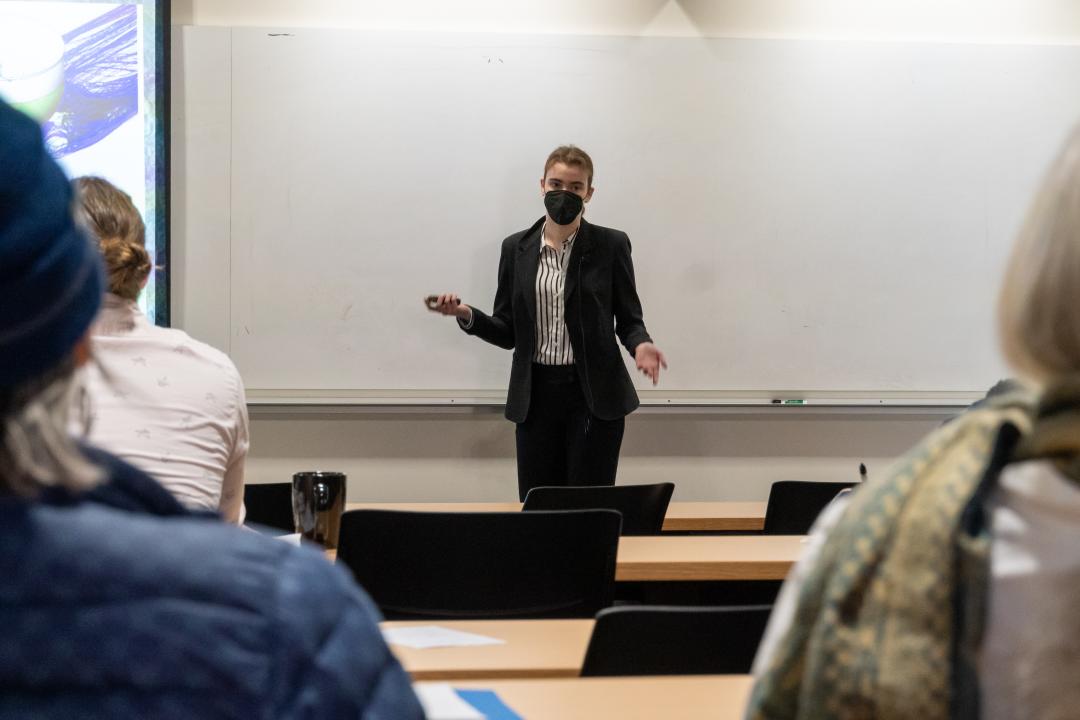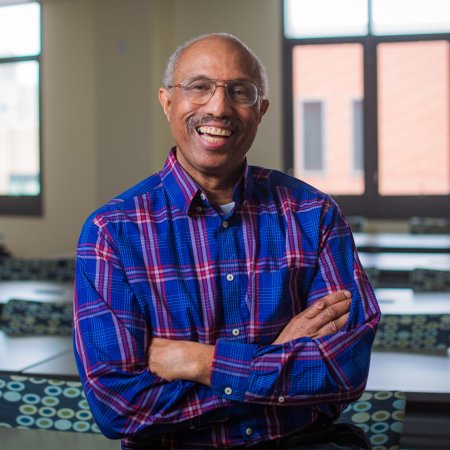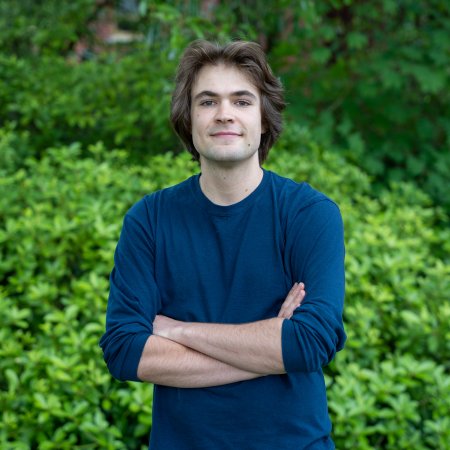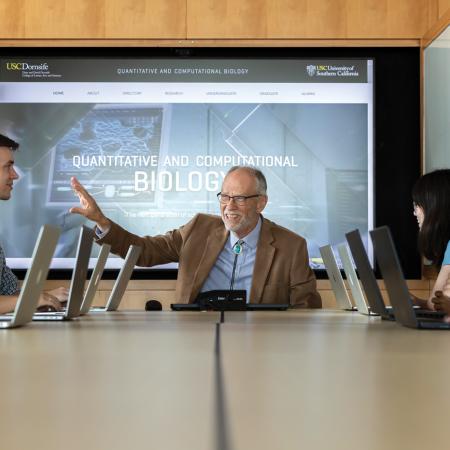Three years ago, current Oregon State University Assistant Professor Swati Patel and two colleagues, Padi Fuster and Robyn Brooks, wanted to do something to counter systemic racism and inequities in mathematics. In response, they founded the Math For All conference at Tulane University in New Orleans.
“We created this conference to try to build a more positive and welcoming culture in mathematics,” Patel said. “We thought of a conference that would be an open and friendly space for people to gather and talk about math, math education and how it relates to diversity, justice and inequity.”
Math For All is now a national conference that hosts annual local programs throughout the country. In late February, about 40 people attended the Math For All satellite conference in Corvallis for free. Inside Owen Hall, attendees learned how mathematics applies to everyday life and experienced a sense of belonging to a powerful scientific community. Talks and discussions covered everything from human rights in data science to the mathematics of paper folding. The date marks the conference’s second year at Oregon State University with the highest attendance on record.
The conference welcomed people from Linn-Benton Community College, Chemeketa Community College, Portland State University, University of Portland and Oregon State. Participants included undergraduate students, graduate students, post-doctoral students, instructors and faculty members.
Breaking down barriers in mathematics
When they walked into the event, attendees picked up their nametags and marked their favorite math topics beneath their name, such as math art, trivia, social justice and non-traditional examples of mathematics. While participants waited for the conference to begin, the topic on their nametags acted as a jumping-off point for conversations with new people.
“It makes me very happy when undergraduates feel comfortable in this space to ask questions. It takes courage to do that,” Patel said. “It’s not easy to raise your hand and ask a question to a speaker.”
After the mathematics department chair shared opening remarks, Oregon State graduate student and co-organizer Leah Sturman said the first guided discussion included an activity where participants matched important mathematical theorems to the actual societal impact.
Participants then split into groups and developed flowcharts that related those theorems to another branch of math they were familiar with. The activity asked the question, “What does my math mean for people around me?” Some groups decided to relate the theorem to a tool they use themselves, such as illustrating how the Pythagorean Theorem related to GPS.
“Mathematics is far more doable than a lot of people think,” Sturman said. “It is not nearly as impenetrable or scary as people’s guts tell them. I’ve seen people who think they are bad at math actually be really good at it.”
After the activity, co-organizers posted these flowcharts on the wall for other people to see throughout the day.
“In the second session, we had a little bit more discussion around the thought behind the flowchart activity,” Sturman said. “You know, how can we be conscientious and choose to do mathematics that has a positive impact on society?”
Afterward, attendees watched short talks and participated in a variety of conversations. This included equity in math education, human rights in data science, the mathematics of paper folding, gatekeeping in math education, wave energy converter design, risk factor models for opioid addictions, race and gender intersectionality in STEM college programs and more.
The topics discussed were varied so that attendees could see how mathematics impacts society as a whole, including the communities they are a part of. This enabled everyone to bring their own experiences to the table.
"When I went to college, I don't ever remember having a space when I was an undergrad where the conversations like this were being facilitated and were encouraged."
Austin Bosgraaf, a graduate student in the Department of Mathematics at Oregon State, saw one of his office mates preparing a flier for the conference. After talking to others about it, he decided to attend and be a speaker. In a short talk, he discussed the dimensions needed to spin a basketball on a finger.
During the question period, Bosgraaf was impressed with the imaginative nature of participants and said questions were not strictly mathematical. Many participants used their intuition to ask whether certain ways to spin the ball would work.
One attendee asked him about the number of times a ball’s points need to spin before returning to their original position.
“So when we spin a regular basketball, the points go around in circles and they all come back to their original location at the same time. And so she asked me, in the higher dimensional case, if the frequency at which points returned to their original place can vary,” Bosgraaf said. “Maybe this point needs to go around four times before this point makes it all the way around once. The answer to that question is yes. That was an amazing question because it's not obvious to me at all that you would expect that.”
